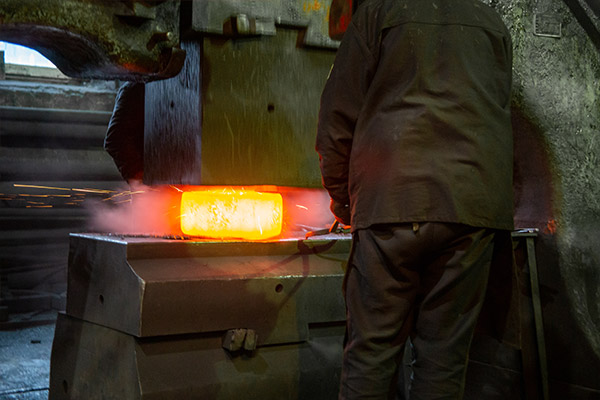Welcome to My Blog! 🌟
Before we dive into the content, I’d love for you to join me on my social media platforms. It’s where I share more insights, engage with our vibrant community, and post regular updates. Here’s how you can stay connected:
📘 Facebook: Connect with me on Facebook
Now, let’s embark on this journey together. I hope you find the content here insightful, engaging, and most importantly, valuable. Let’s explore, learn, and grow together! 🚀
Table of Contents
Introduction

In the world of blades and craftsmanship, the material of the blade is just as important as its design. One particular material has gained widespread attention among both professional knife makers and everyday users: d2 steel for knives. Known for its balance between toughness and wear resistance, this tool-grade steel offers a compelling combination of performance traits that make it ideal for various knife applications, from outdoor use to tactical and culinary purposes.
D2 steel has a rich history dating back to its use in industrial tools. However, modern metallurgy and knife design have elevated it to a new level in the knife-making industry. Those who seek a reliable edge that stays sharp longer without constant maintenance often look toward d2 steel for knives as a smart choice.
This article presents eight expert insights that will help you understand the properties, performance, and practical implications of using d2 steel for knives. Whether you’re a seasoned collector, a professional craftsman, or a first-time buyer, these insights will equip you with the knowledge needed to make an informed decision.
1. The Chemical Composition of D2 Steel for Knives
The first and most essential expert insight begins with the chemical foundation of d2 steel. As a high-carbon, high-chromium tool steel, it is categorized as semi-stainless. This classification means it contains enough chromium to offer some corrosion resistance but not as much as fully stainless steels.
D2 steel contains approximately:
- Carbon: 1.5%
- Chromium: 12%
- Molybdenum: 0.9%
- Vanadium: 1.1%
- Manganese: 0.6%
- Silicon: 0.4%
This composition contributes to the steel’s hardness, wear resistance, and ability to maintain a sharp edge. However, because of its relatively lower chromium content compared to true stainless steels, it does require maintenance to avoid corrosion.
The high carbon percentage in d2 steel for knives allows the blade to be hardened significantly, which means it can retain its edge longer than softer steels. This makes it a favorite for tactical and survival knives where long-lasting sharpness is essential.
2. Edge Retention and Hardness: Key Performance Metrics

One of the standout properties of d2 steel for knives is its exceptional edge retention. Edge retention refers to how long the blade stays sharp during use. D2 steel typically scores between 58-61 on the Rockwell Hardness Scale (HRC), though some specialized heat treatments can push this number even higher.
This level of hardness is particularly useful for tasks that involve cutting tough materials like rope, leather, cardboard, or even wood. It ensures that the knife can withstand repeated use without dulling quickly. However, with increased hardness comes increased brittleness, meaning that d2 steel blades are more prone to chipping under improper use, such as prying or striking hard materials.
While sharpening d2 steel for knives may take more effort due to its hardness, the frequency of sharpening is significantly reduced. Many professional users are willing to invest extra time in sharpening because of the long-lasting results it provides.
Edge Retention vs. Sharpenability:
| Property | D2 Steel Performance | Comment |
|---|---|---|
| Edge Retention | Excellent | Retains sharpness through prolonged use |
| Sharpening Difficulty | Moderate to High | Needs proper tools and technique |
| Toughness | Moderate | Can chip if misused |
| Wear Resistance | High | Handles abrasion and friction well |
Understanding the trade-off between ease of sharpening and edge durability is key when considering d2 steel for knives.
3. Corrosion Resistance and Maintenance
Despite having nearly 12% chromium content, d2 steel for knives does not meet the 13% threshold required for classification as stainless steel. Therefore, while it does have moderate corrosion resistance, it is not completely impervious to rust, especially in humid or salty environments.
This property requires knife owners to be proactive about maintenance. After each use—especially if the knife comes into contact with water, acidic substances, or organic materials—users should clean and dry the blade thoroughly. Applying a thin layer of oil helps protect the surface from oxidation.
Corrosion resistance becomes particularly important when using knives outdoors, in marine environments, or in food preparation settings. Those looking for a truly maintenance-free option might prefer full stainless steels, but if you’re willing to put in a small amount of upkeep, d2 steel for knives can perform exceptionally well.
4. D2 Steel for Knives in Practical Use: Outdoor, Tactical, and Culinary

D2 steel for knives finds its way into a wide array of applications due to its versatility and reliability. It has carved a strong reputation across multiple domains, including survival, military, hunting, EDC (everyday carry), and even some kitchen environments.
Outdoor Use:
In wilderness or survival scenarios, the edge retention and durability of d2 steel are critical. Bushcraft knives made from d2 can handle tasks like wood splitting, game processing, and shelter building without the need for frequent sharpening.
Tactical Use:
Many military and law enforcement professionals rely on d2 steel for tactical knives due to its strength and sharpness. In high-stress situations, having a dependable blade that won’t fail is essential.
Culinary Use:
Though not the top choice for kitchen knives due to maintenance requirements, d2 steel is sometimes used in chef knives and cleavers. The hardness allows for precise slicing and chopping with minimal re-sharpening.
Each application benefits differently from the core properties of d2 steel. Understanding how and where you intend to use the knife can determine whether this steel type is the best fit for your needs.
5. How Heat Treatment Affects D2 Steel for Knives
The process of heat treatment is a critical step in maximizing the performance of d2 steel. By heating and cooling the steel under controlled conditions, manufacturers can fine-tune its hardness, toughness, and flexibility. A properly heat-treated d2 blade will outperform a poorly treated one, regardless of its specifications on paper.
Skilled knife makers understand the delicate balance between hardening the steel and retaining enough toughness to avoid brittleness. Some expert heat treatments push d2 steel into the 62 HRC range, while others dial it back slightly to favor resilience over raw edge retention.
For knife buyers, it’s important to consider not just the steel type but the reputation and expertise of the maker or manufacturer. Poor heat treatment can lead to performance issues like premature dulling or structural failure, which are not inherent flaws of the steel itself but rather a result of improper processing.
6. Comparing D2 Steel for Knives to Other Popular Steels
In the world of knives, no single steel reigns supreme for all purposes. Choosing the best option requires comparison. Here’s how d2 steel for knives compares to other popular types of knife steel:
| Steel Type | Edge Retention | Corrosion Resistance | Toughness | Ease of Sharpening | Ideal Use Case |
|---|---|---|---|---|---|
| D2 Steel | Excellent | Moderate | Moderate | Moderate | Tactical, survival knives |
| 440C | Good | High | Good | Easy | Kitchen, EDC |
| VG-10 | Very Good | High | Good | Moderate | Chef knives, premium EDC |
| 1095 Carbon | Fair | Low | High | Easy | Outdoor, bushcraft |
| S30V | Excellent | High | Moderate | Difficult | High-end tactical/EDC |
This comparison shows that d2 steel for knives offers a balance that many users find appealing: long-lasting sharpness and acceptable corrosion resistance, provided they’re willing to maintain it.
7. Cost and Value of D2 Steel for Knives
One of the practical advantages of d2 steel is that it offers premium-level performance without the price tag of ultra-high-end steels. While it is more expensive than entry-level carbon steels, it remains affordable compared to powder metallurgy steels like CPM-S35VN or M390.
This cost-effectiveness makes it a go-to choice for mid-range to high-quality knives. Whether you’re buying a tactical blade or a reliable outdoor tool, d2 steel allows you to get excellent edge retention and strength at a fraction of the cost of some exotic alloys.
It’s also worth noting that the longevity of d2 steel for knives often results in long-term savings. Fewer sharpenings, less frequent replacements, and reliable performance make it a smart investment.
8. Expert Buying Tips for D2 Steel Knives

Experts recommend that anyone interested in d2 steel for knives consider a few important tips before purchasing:
- Check the heat treatment – Look for knives from reputable makers who disclose their hardening process.
- Inspect grind type – A flat or convex grind works best with d2 steel to optimize edge durability.
- Evaluate coating – Since d2 is not fully stainless, consider knives with protective coatings to enhance corrosion resistance.
- Understand use cases – Buy according to your needs; don’t use a d2 knife for prying or chopping if it’s designed for slicing.
- Mind the warranty – Reliable manufacturers often provide coverage in case of manufacturing defects.
Following these expert tips can ensure that you choose a blade that not only meets your expectations but also lasts for years.
Conclusion
The versatility, hardness, and performance of d2 steel for knives make it a mainstay in the industry. While no steel is perfect, the balance of strengths that d2 provides—particularly its edge retention and wear resistance—has earned it a loyal following.
By understanding the nuances of this steel, including its limitations in corrosion resistance and sharpening difficulty, knife users can make better decisions for their specific needs. Whether you are heading into the wilderness, preparing for tactical missions, or simply slicing vegetables, d2 steel is more than capable of delivering reliable performance.
For those willing to care for their tools and invest in proper sharpening, d2 steel for knives can be a dependable companion for years to come.
FAQ
Is d2 steel stainless?
No, d2 steel is not classified as stainless because it contains less than 13% chromium. It is semi-stainless and requires regular maintenance to prevent rust.
How often should I sharpen a d2 knife?
That depends on usage, but generally much less frequently than softer steels. With proper use, d2 blades can stay sharp for extended periods.
Can I use d2 steel for food preparation?
Yes, but you must clean and dry the blade after use. Its moderate corrosion resistance means it can rust if left in wet conditions.
Is d2 steel brittle?
D2 steel is hard, which can make it more prone to chipping if misused. Avoid using it for prying or cutting hard objects like bones or metal.
How does d2 compare to S30V?
S30V has better corrosion resistance and slightly better overall performance but comes at a much higher price. D2 offers excellent value for its performance range.

